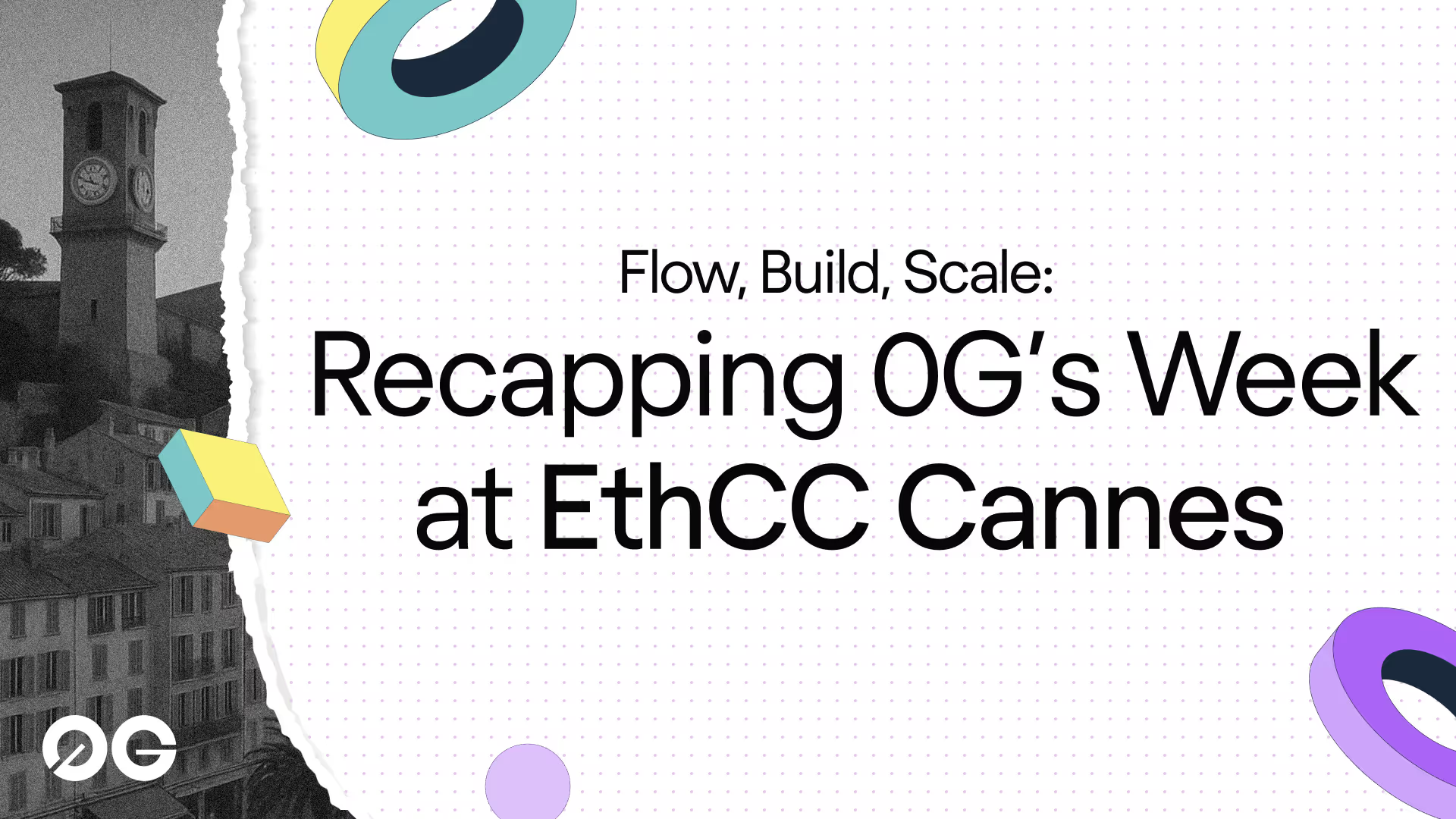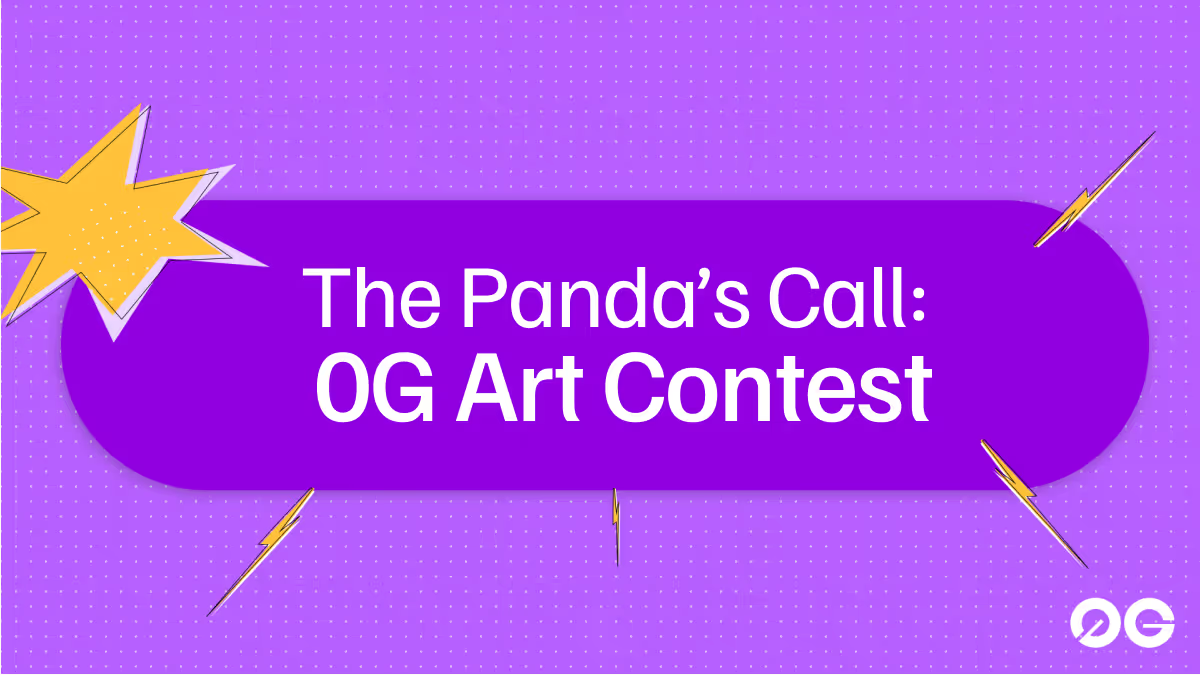

0G Serving
0G is building the world’s first Artificial Intelligence Layer (AIL)—a new category of modular infrastructure designed to bring verifiable, composable intelligence onchain. At the heart of this AIL is 0G’s decentralized AI Operating System (deAIOS), a unified platform that combines compute, storage, and data availability.
This infrastructure has three different components:
- 0G Storage: For decentralized data storage.
- 0G DA: A decentralized data availability layer.
- 0G Serving: A decentralized marketplace for AI services.
Together, these form a unified, one-stop platform for decentralized AI, enabling developers to build, serve, and verify intelligent applications—all onchain. This is what we call Infinite AI: a future of modular, verifiable, and open intelligence.. Notably, we’ve already covered 0G Storage and 0G DA in-depth in other blog posts.
In this article, we focus on 0G Serving, the AI services layer of our AIL. 0G Serving is a decentralized peer-to-peer marketplace where users can access inference, fine-tuning, and other model-serving capabilities—and where providers can permissionlessly list and monetize AI services.
0G Serving is not live yet, but will be released shortly with updates coming via our Twitter.
In this piece, we will cover:
- AI Workload Management and Service Interaction
- Scalability and Incentive Structure
- Integration with dAIOS
- Getting Started
AI Workload Management and Service Interaction
0G Serving handles various AI tasks, from model inference to data retrieval and training. It enables real-time interaction with decentralized AI applications while ensuring transparency and user control. This framework is essential for AI models that require constant updates and large-scale computations.
A key advantage of the 0G platform is its ability to efficiently manage "hot data", meaning data that is frequently accessed or rapidly processed, such as financial market feeds, user activity logs, or dynamically evolving datasets. 0G incentivizes data storage providers (whether 0G Storage or external on-chain storage) to minimize latency, a critical factor for real-time AI processing where rapid data retrieval is crucial.
This low-latency environment supports applications that rely on fast AI processing, such as AI-driven trading algorithms, on-chain AI Agents, high-performance dApps, or real-time user interaction analytics.
Sellers who are providing these AI services can:
- Set Pricing: Charging for AI services based on demand, the type of GPUs used, and more.
- Specify Task Verification Methods: Implementing custom validation processes to confirm accurate task completion. For example, automated smart contract checks or “proofs of completion” could verify that the model selected is the one that's actually being used to generate the response. This compares with most of AI, which is a black box and cannot be held accountable.
- Accept Payments in $0G: Pre-payments in $0G tokens are held in smart contracts and released once tasks are completed and verified.
For example, an AI model provider might set a dynamic price based on the complexity of the inference task, charging higher fees for more resource-intensive requests.
Users pre-charge their accounts via smart contracts when they request services.
The interaction between users and service providers is governed by signatures attached to each request and response. Users verify the results of their requests, and once satisfied, providers can submit a trace of the transaction to the smart contract for fee settlement.
0G has already partnered with an extensive number of projects that will benefit from listing their services via 0G Serving once it goes live.
Scalability and Incentive Structure
0G is designed for infinite scalability, utilizing two types of sharding for optimal performance:
- Data Sharding: Large datasets are split into data chunks and stored redundantly across 0G Storage, ensuring fault tolerance and fast access.
- Consensus Sharding: Data Availability (DA) nodes communicate with the consensus network, 0G Consensus, which allows for an arbitrary number of parallel networks managed by the same validators. Validators only stake once on Ethereum mainnet but engage in shared staking across networks. This means that new consensus networks can be added quickly and managed by the same set of validators without having to bootstrap a new validator set.
This dual-sharding approach, at both the data and consensus levels, enables 0G to scale while managing vast datasets. In turn, a range of high-performance AI applications can thrive fully on-chain.
0G Serving operates within an open-fee market, allowing service providers to set competitive pricing for their AI offerings based on market conditions. This structure aims to outperform centralized AI systems in terms of pricing while delivering the key benefits of decentralized AI: data ownership, enhanced transparency, and more equitable monetization.
Integration with dAIOS
0G Serving integrates with 0G’s storage and data availability layers, creating a complete dAIOS that handles all aspects of AI workflows efficiently.
We covered 0G’s role as a dAIOS in-depth here.
At a high level:
- 0G is the world’s first Decentralized AI Operating System (dAIOS), providing scalable, transparent infrastructure for AI through decentralized storage, data availability, and service components.
- The system consists of 0G Storage for data storage, 0G DA for scalable data availability, and 0G Serving for AI services, ensuring end-to-end support for AI workflows.
- 0G addresses key issues in centralized AI, such as data ownership, transparency, and fair monetization, offering a decentralized alternative with better incentive structures.
All in all, 0G is bringing decentralized AI to life—and we want you to join us!
Whether you’re a developer, a Web3 project, or an AI service provider, 0G can help you build, scale, and monetize AI solutions in a decentralized environment. If you’re ready to be a part of the future of AI, please reach out.
We’d love to explore partnership opportunities and help you start building with us today!




.png)

